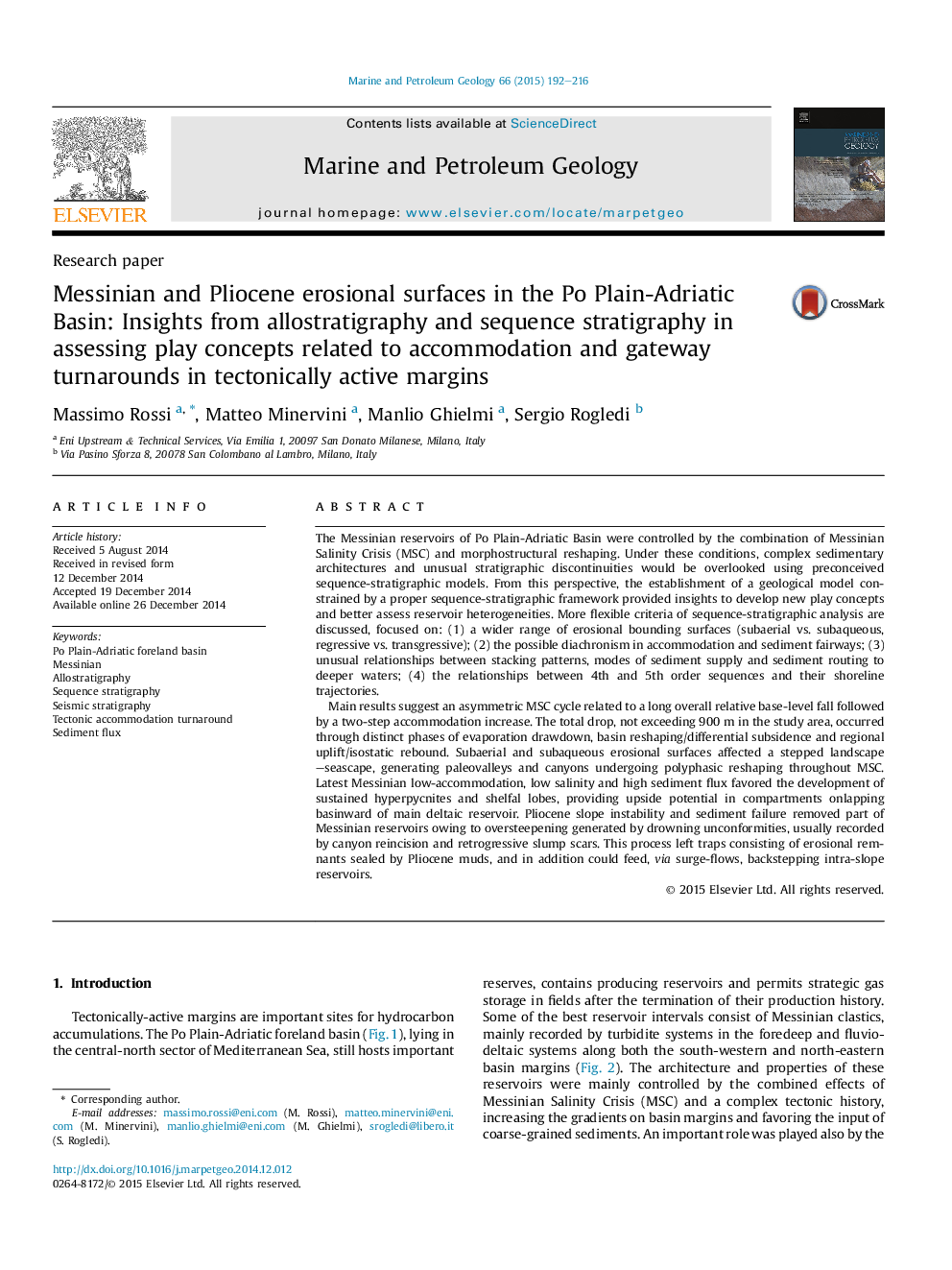| Article ID | Journal | Published Year | Pages | File Type |
|---|---|---|---|---|
| 4695523 | Marine and Petroleum Geology | 2015 | 25 Pages |
•The variable nature of Messinian and Pliocene erosional surfaces is documented.•Erosional surfaces were controlled by basin reshaping and local structural elements.•Stratigraphic architectures differ from those usually associated with systems tracts.•De-risking of new play concepts is constrained by the tectono-stratigraphic framework.•Accommodation and gateway turnarounds control play types and reservoir heterogeneity.
The Messinian reservoirs of Po Plain-Adriatic Basin were controlled by the combination of Messinian Salinity Crisis (MSC) and morphostructural reshaping. Under these conditions, complex sedimentary architectures and unusual stratigraphic discontinuities would be overlooked using preconceived sequence-stratigraphic models. From this perspective, the establishment of a geological model constrained by a proper sequence-stratigraphic framework provided insights to develop new play concepts and better assess reservoir heterogeneities. More flexible criteria of sequence-stratigraphic analysis are discussed, focused on: (1) a wider range of erosional bounding surfaces (subaerial vs. subaqueous, regressive vs. transgressive); (2) the possible diachronism in accommodation and sediment fairways; (3) unusual relationships between stacking patterns, modes of sediment supply and sediment routing to deeper waters; (4) the relationships between 4th and 5th order sequences and their shoreline trajectories.Main results suggest an asymmetric MSC cycle related to a long overall relative base-level fall followed by a two-step accommodation increase. The total drop, not exceeding 900 m in the study area, occurred through distinct phases of evaporation drawdown, basin reshaping/differential subsidence and regional uplift/isostatic rebound. Subaerial and subaqueous erosional surfaces affected a stepped landscape–seascape, generating paleovalleys and canyons undergoing polyphasic reshaping throughout MSC. Latest Messinian low-accommodation, low salinity and high sediment flux favored the development of sustained hyperpycnites and shelfal lobes, providing upside potential in compartments onlapping basinward of main deltaic reservoir. Pliocene slope instability and sediment failure removed part of Messinian reservoirs owing to oversteepening generated by drowning unconformities, usually recorded by canyon reincision and retrogressive slump scars. This process left traps consisting of erosional remnants sealed by Pliocene muds, and in addition could feed, via surge-flows, backstepping intra-slope reservoirs.
